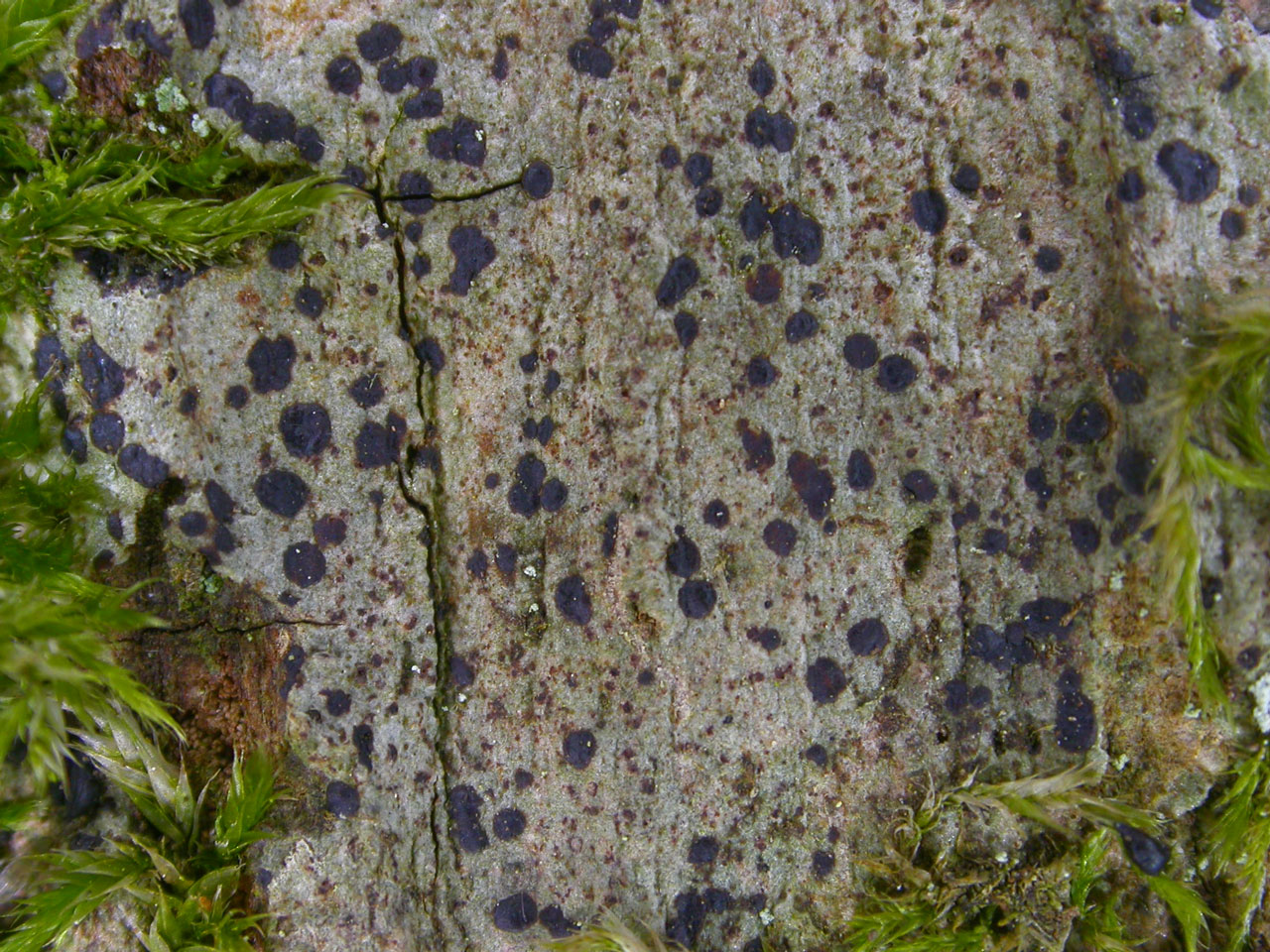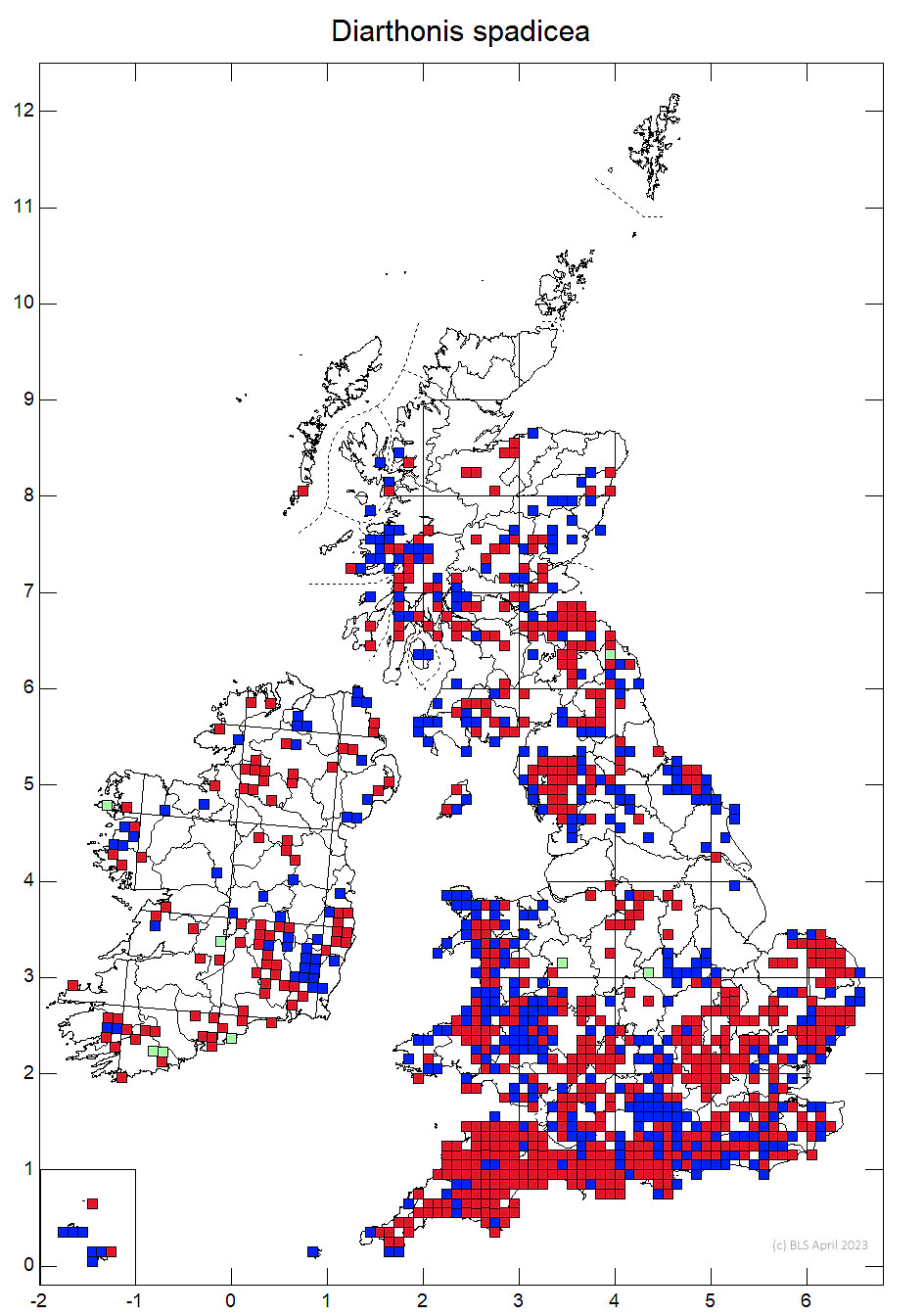A common lichen of shade trunks in woods, readily identified by its tar spot like marginless black apothecia. Well developed fertile Arthonia vinosa can look similar but usually has some red staining on the thallus, more convex apothecia, has larger spores and has K+ magenta and K+ purple pigments that dissolve in K.
Tallus immersed, occasionally superficial, to 35 µm thick, effuse, pale to dark grey, often tinged green; hyphae K/I–. Apothecia (0.1–) 0.2–1.5 mm diam., rounded, flat to slightly convex, red-brown to brown-black, often slightly glossy, resembling spots of tar; in section 55–70 µm tall, ± uniformly orange- brown, K+ dull pale purple; epithecium indistinct; hymenium 25–35 µm tall; hypothecium 30–40 µm tall; paraphysoids 0.5–1 (–1.5) µm diam., not swollen or pigmented at the apices; apices often embedded in a thin, clear gel-like layer. Ascospores 7–11 × 3–4 µm, 1-septate, obovoid or slipper-shaped, colourless. Pycnidia frequent, 80–100 µm diam., brown, the wall orange- to red-brown, K+ pale purple; conidia 3–4.5 × 0.5–1 µm, bacilliform to narrowly ellipsoidal, straight or slightly curved. Lichen products not detected by TLC.
Distinguished from Arthonia vinosa by the usually less convex apothecia, smaller ascospores, and apothecial pigment that turns pale purple, but does not dissolve in K.
On very shaded bark of trunks (usually at or near the base) of deciduous trees, in moist woodland.

Rather common except in very air-polluted areas, rare in N. Scotland. Throughout Britain except for N. Scotland, widespread in Ireland.
Cannon, P., Ertz, D., Frisch, A., Aptroot, A., Chambers, S., Coppins, B. J., Sanderson, N. A., Simkin, J. & Wolseley, P. (2020) Revisions of British and Irish Lichens Volume 1 August 2020 Arthoniales: Arthoniaceae.
Text by Neil A Sanderson, based on Cannon et al (2020)

